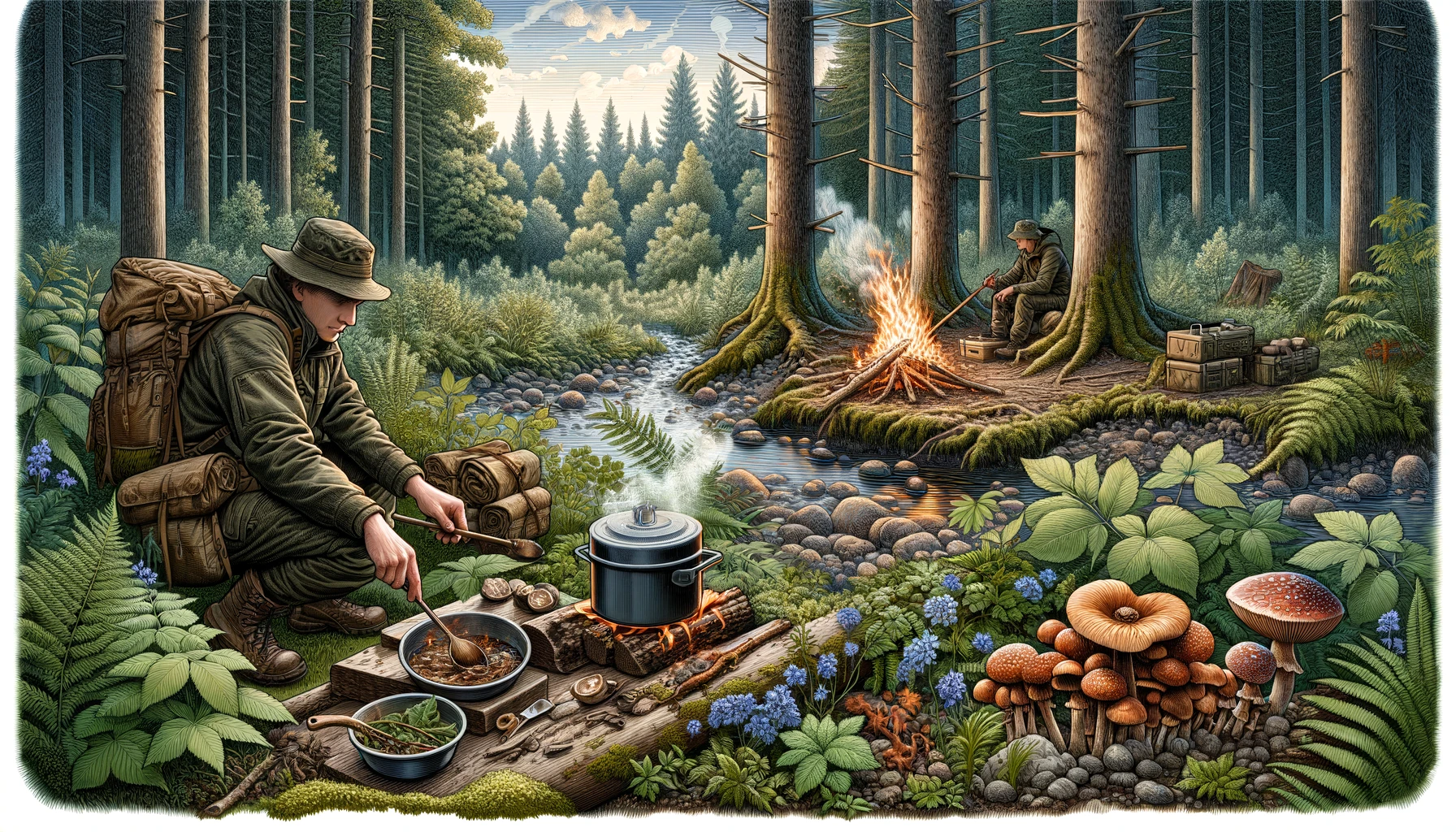Survival cooking and foraging are invaluable skills for anyone who spends time in the outdoors, whether you’re camping, hiking, or in a survival situation. Knowing how to find and prepare food in the wild can make the difference between thriving and merely surviving. This comprehensive guide will take you through the essentials of foraging for edible plants and fungi, identifying safe sources of nutrition, and preparing meals with minimal tools and resources.
Understanding Your Environment
Before you begin foraging and cooking in the wild, it’s crucial to understand the environment you’re in. Different ecosystems offer various resources and challenges. Familiarize yourself with the local flora and fauna, and understand the seasonal cycles that affect food availability. Research the area you plan to explore, focusing on common edible plants and animals, as well as those that are toxic.
Basic Principles of Foraging
Foraging for wild food requires knowledge, caution, and respect for nature. Here are some foundational principles:
- Safety First: Always be sure of the identity of any plant or mushroom before consuming it. Many edible species have poisonous look-alikes.
- Sustainable Harvesting: Take only what you need and leave enough behind for the plant to regenerate and for wildlife to feed on.
- Legal Considerations: Be aware of local laws regarding foraging. Some areas may have restrictions or require permits.
Identifying Edible Plants and Fungi
Learning to identify edible plants and fungi is a key skill for any forager. Invest in a good field guide specific to your region and consider taking part in foraging workshops or guided walks.
- Edible Plants: Look for common edible plants such as dandelions, nettles, and wild onions. These plants are often abundant and easy to identify.
- Edible Fungi: Mushrooms like morels, chanterelles, and puffballs can be delicious but be extremely cautious, as many mushrooms are toxic or even deadly.
- Testing for Edibility: If you’re unsure about a plant, you can use the Universal Edibility Test, which involves a series of steps to determine if a plant is safe to eat. However, this test should be a last resort.
Foraging for Protein
In addition to plants and fungi, protein is a critical component of a balanced diet. Insects, fish, and small game can be valuable protein sources in the wild.
- Insects: Many insects are edible and high in protein. Look for grubs, ants, and beetles. Ensure they’re cooked properly to kill any parasites.
- Fishing: If you’re near water, fishing can be an excellent way to secure a meal. Improvise a fishing rod or spear if you don’t have gear.
- Trapping Small Game: Small animals like rabbits and squirrels can be trapped using snares. Familiarize yourself with local regulations and humane trapping techniques.
Water Safety
Water is more critical than food in a survival situation. Always prioritize finding a clean water source. If in doubt, boil water for at least one minute to kill pathogens. Learn to construct simple water filters using natural materials if boiling is not an option.
Preparing and Cooking Wild Food
Cooking in the wild with limited tools and resources requires creativity and flexibility. Here are some methods and tips:
- Fire Building: Master the art of fire building using natural materials. A fire is not only for cooking but also for warmth and safety.
- Simple Cooking Techniques: Learn to roast, boil, and steam using makeshift tools. Stones can be heated and used for baking. Green wood skewers can hold meat or vegetables over a flame.
- Preservation Methods: Smoking and drying are traditional methods for preserving meat and fish, allowing you to store food for longer periods.
Putting It All Together: A Sample Meal
Imagine you’ve foraged dandelions, wild onions, and found a small trout from a nearby stream. Here’s how you could prepare a simple, nutritious meal:
- Clean and Prepare Your Ingredients: Rinse the dandelions and wild onions in clean water. Gut and clean the trout.
- Cooking the Trout: Season the trout with wild onions and wrap it in damp leaves to keep it moist. Cook it over hot coals for several minutes on each side.
- Preparing a Salad: Combine the dandelion leaves with any other edible greens you’ve found. If available, add wild berries for sweetness.
- Enjoy Your Meal: Together, these components provide a balanced meal rich in vitamins, minerals, and protein, all sourced directly from nature.
Advanced Techniques and Considerations
As you become more proficient in survival cooking and foraging, you may explore more advanced techniques, such as fermenting plant foods for preservation or crafting more sophisticated tools and cookware from natural materials.
- Mental Preparedness: Mental resilience is as important as physical skills. Stay calm, stay focused, and make informed decisions.
- Ethical Foraging: Always forage responsibly. Respect wildlife, and do not overharvest. Remember, you are a part of the ecosystem, not apart from it.
Conclusion
Survival cooking and foraging are not just emergency skills but are also deeply rewarding practices that connect us with the natural world in a profound way. They remind us of our ancestral roots and teach us to appreciate the abundance and beauty of nature. Whether you’re an avid outdoors person or someone interested in sustainable living, these skills can enrich your life and provide a deeper sense of self-reliance and connection to the environment.


0 Comments